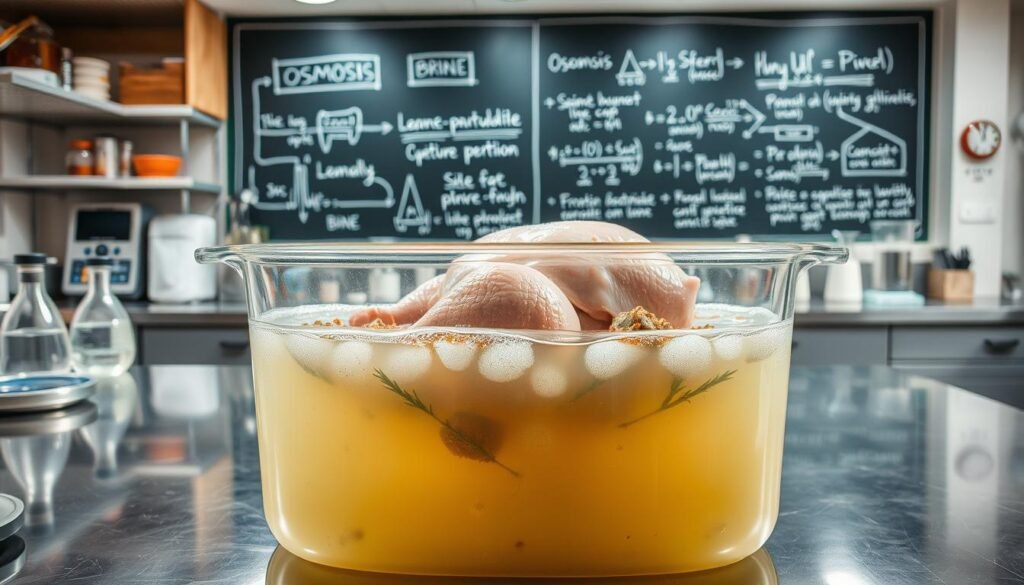Chicken Brine recipes: The best recipes in 2025
Have you ever wondered how to make your meals juicier and more flavorful? The secret lies in a simple yet powerful technique: brining. This method has been a game-changer for home cooks and professional chefs alike, ensuring every bite is tender and delicious.
In this post, we’ll explore the best techniques for 2025, designed to make your cooking experience easier and more rewarding. Whether you’re preparing a quick weeknight dinner or a special weekend feast, these methods will elevate your dishes to the next level.
Timing and temperature are crucial for perfect results. A basic mix of salt and water can work wonders, but we’ll also share tips for customizing your brine to suit your taste. From whole birds to individual pieces, these techniques are versatile and easy to follow.
Get ready to transform your meals with these simple yet effective strategies. Let’s dive into the world of brining and discover how it can make your cooking unforgettable.
Table of Contents
Understanding the Science Behind Brining Chicken
Ever wondered why some dishes taste so much better than others? The answer often lies in the science of brining. This technique isn’t just about adding flavor—it’s about transforming the very structure of meat to make it juicier and more tender.
How Salt and Water Transform Meat
At the heart of brining is the interaction between salt and water. When you soak meat in a saltwater solution, the salt breaks down proteins in the muscle fibers. This process, called denaturation, allows the meat to retain more water during cooking. The result? A juicier, more flavorful piece every time.
Water acts as a solvent, carrying the salt and other flavor compounds deep into the meat. This is why adding a bit of sugar to your brine can enhance the flavor even further. The sugar balances the saltiness and adds a subtle sweetness.

The Role of Temperature and Timing
Temperature and timing are critical to the brining process. For a whole chicken, you’ll want to brine it for 4-6 hours in the fridge. Smaller pieces, like breasts or thighs, can be brined for just 2-3 hours at room temperature. The key is to avoid over-brining, which can make the meat too salty.
Using cold water helps maintain the meat’s texture, while a quick ice bath after brining locks in moisture. This step is especially important if you’re preparing a large piece like a whole bird. By controlling the temperature and timing, you ensure the meat stays tender and flavorful.
Here’s a quick breakdown of recommended brining times:
- Whole chicken: 4-6 hours in the fridge
- Chicken pieces: 2-3 hours at room temperature
Understanding these principles will help you master the art of brining and elevate your cooking to the next level.
Benefits of a Chicken Brine Recipe for Juicy, Flavorful Meat
Discover how a simple technique can transform your meals into juicy, flavorful masterpieces. Brining is more than just a cooking hack—it’s a method that ensures every bite is tender, moist, and packed with flavor. By understanding the science behind it, you can take your cooking to the next level.

Brining works by allowing the salt and water solution to penetrate deep into the meat. This process not only enhances flavor but also helps retain moisture during cooking. The result is a dish that’s consistently delicious, whether you’re preparing a quick weeknight dinner or a special feast.
Enhanced Flavor Penetration
One of the biggest advantages of brining is its ability to infuse flavor throughout the meat. When you use a solution with kosher salt, water, and other ingredients like garlic or herbs, the flavors are carried deep into the muscle fibers. This ensures every bite is equally flavorful, from the surface to the center.
For example, adding a tablespoon of sugar to your brine can balance the saltiness and add a subtle sweetness. This technique is especially effective when using a pot to submerge the meat completely, allowing the solution to work its magic evenly.
Tenderizing the Muscle for Perfect Texture
Brining also plays a key role in tenderizing the meat. The salt in the solution breaks down proteins, making the muscle fibers more relaxed and able to retain moisture. This process, combined with the right temperature and timing, ensures the meat stays juicy even after cooking.
For smaller cuts, a quick brine of 2-3 hours at room temperature is often enough. Larger pieces, like a whole bird, benefit from a longer soak of 4-6 hours in the fridge. This step-by-step approach guarantees a tender texture every time.
| Cut of Meat | Brining Time | Temperature |
|---|---|---|
| Whole Bird | 4-6 hours | Refrigerated |
| Breasts or Thighs | 2-3 hours | Room Temperature |
By following these guidelines, you can avoid the risk of dry, overcooked meat and enjoy a consistently improved eating experience. Brining is a simple yet powerful technique that every home cook should master.
Essential Equipment and Ingredients for Brining
Getting the right tools and ingredients is the first step to unlocking incredible flavor in your meals. Whether you’re preparing a breast or a whole bird, having the proper equipment ensures consistent results. Let’s dive into the must-have items and their roles in the process.
Must-Have Kitchen Tools
To start, you’ll need a medium saucepan for boiling the solution. This helps dissolve the salt and other ingredients evenly. A large bowl is essential for cooling the mixture with ice, ensuring it reaches the right room temperature before use.
For storage, a food-safe container or sealable bag works best. These keep the meat fully submerged, allowing the solution to penetrate evenly. If you’re using advanced techniques, a sous vide tub can help maintain precise heat levels.
Key Ingredients and Their Functions
The foundation of any solution is kosher salt. It breaks down proteins, helping the meat retain moisture. Fresh herbs like rosemary and thyme add depth, while garlic infuses a rich flavor.
Sugar balances the saltiness and adds a subtle sweetness. Water acts as the carrier, ensuring all ingredients penetrate deeply. For a refreshing twist, consider adding citrus fruits like lemons or oranges.
| Ingredient | Function |
|---|---|
| Kosher Salt | Breaks down proteins, retains moisture |
| Fresh Herbs | Adds depth and aroma |
| Garlic | Infuses rich flavor |
| Sugar | Balances saltiness, adds sweetness |
| Water | Carries ingredients into the meat |
By using the right tools and ingredients, you ensure every bite is tender, juicy, and packed with flavor. Whether you’re preparing a quick side or a main dish, these essentials will elevate your cooking game.
Mastering the Chicken Brine Recipe
Ready to take your cooking skills to the next level? Mastering the art of preparing meat with a simple yet effective technique can make all the difference. This method ensures every bite is juicy, flavorful, and perfectly tender.
Step-by-Step Preparation Process
Start by mixing water with kosher salt and aromatics like garlic and herbs. Heat the mixture in a saucepan until the salt dissolves completely. This step is crucial for even flavor distribution.
Once heated, cool the solution thoroughly with ice. This prevents the meat from cooking prematurely. Weigh your meat by the pound to determine the ideal brining time—typically 4-6 hours for a whole bird or 2-3 hours for smaller cuts.
After brining, pat the meat dry with paper towels. This step ensures a crispy surface when cooking. Proper drying also helps the flavors penetrate evenly, enhancing the overall taste.
Cooking Methods that Complement Brined Meat
Brined meat shines in various cooking methods. Roasting at 400°F creates a golden, crispy exterior while keeping the inside moist. Use a digital thermometer to ensure the internal temperature reaches 165°F for safety.
Searing is another excellent option. The dry surface from air-drying allows for a perfect crust. Experiment with grilling or smoking to add a smoky depth of flavor. These methods preserve moisture and enhance the natural richness of the meat.
For a quick weeknight meal, try pan-searing smaller cuts. The retained moisture ensures a juicy result every time. Whether you’re roasting, grilling, or searing, brining guarantees a flavorful and tender dish.
Quick Tips and Variations for Customizing Your Brine
Looking to elevate your cooking game with a few simple tweaks? Customizing your technique can make a world of difference. Whether you’re aiming for bold flavors or a tender texture, these tips will help you get the most out of your process.
Alternate Add-Ins for Extra Flavor
Enhance your solution with creative ingredients. Garlic, peppercorns, and citrus slices like lemon or orange add a zesty kick. Fresh herbs like rosemary, thyme, and bay leaves infuse aromatic depth. For a touch of sweetness, try brown sugar or honey.
Here are some ideas to experiment with:
- Lemon slices for a refreshing tang
- Bay leaves for a subtle earthy note
- Fresh herbs like rosemary or thyme for aroma
Adjusting Brine Time for Different Cuts
Timing is key to achieving the perfect texture. For smaller pieces, like breasts or thighs, 2-3 hours at room temperature is ideal. Larger cuts, such as a whole bird, benefit from 4-6 hours in the fridge. Always check the information on recommended times to avoid over-salting.
Here’s a quick guide:
- Whole bird: 4-6 hours refrigerated
- Smaller pieces: 2-3 hours at room temperature
Properly cover your container to prevent contamination. Use a food-safe lid or sealable bag to keep the solution evenly distributed.
By experimenting with add-ins and adjusting times, you can tailor your technique to suit any dish. These small changes can lead to big improvements in flavor and texture.
How to Serve and Enjoy Your Brined Chicken
The final step to a perfect meal lies in how you serve it. After mastering the technique, it’s time to focus on presentation and pairing. A well-served dish not only looks appetizing but also enhances the flavors and textures you’ve worked so hard to achieve.
Pairing Suggestions and Side Dishes
Pairing your dish with the right sides can elevate the entire meal. Crisp, fresh salads or roasted vegetables are excellent choices. They balance the hearty and juicy nature of the meat, creating a well-rounded plate.
For a lighter option, consider using chicken breast. Its lean profile pairs well with citrus-based salads or quinoa. Adding a touch of brown sugar to your glaze can enhance the sweetness, complementing the savory notes of the dish.
Here are some creative ideas to try:
- Roasted root vegetables with a hint of thyme
- A fresh arugula salad with lemon vinaigrette
- Garlic mashed potatoes for a comforting side
Make sure to check the internal temperature of your dish before serving. For a whole bird, it should reach 165°F to ensure safety and juiciness. Proper air drying before cooking ensures a crispy, textured skin that’s irresistible.
When reheating leftovers, use a low-temperature oven to retain moisture. This keeps each serving as succulent as the first. With these tips, you’ll create a meal that’s not only delicious but also visually appealing and perfectly balanced.
Conclusion
Mastering the art of preparing tender, flavorful meals is easier than you think. By understanding the science behind the process, you can achieve exceptional results every time. The right balance of salt, water, and herbs transforms the texture and taste of your dish, ensuring it stays juicy and delicious.
Using proper equipment and precise measurements, like a teaspoon of seasonings, is key to success. Experiment with add-ins like onion, peppercorn, or a touch of honey to customize the flavor while keeping the core method intact. Attention to detail, from preparation to cooking, guarantees consistent results.
Ready to elevate your meals? Try these techniques and share your results. A well-prepared dish is the secret to a memorable dining experience. Start today and enjoy the difference!

